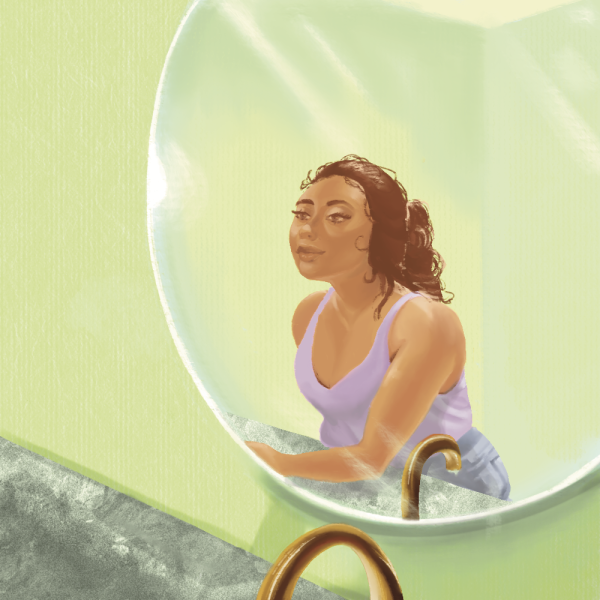Opinion: Van Gogh in a Starbucks
June 7, 2018
Visiting the Metropolitan Museum of Art is like walking into someone’s dream. Roman marble statues gazed lazily up into the ceiling, surrounded by the slow, trickling sound of water from a fountain. In some halls, the ceilings are high and vaulted, letting light cascade onto carved marble. In others, the walls are dull and pinkish, the carpet worn — the perfect backdrop to strange paintings and ominous wooden heads.
Every corner takes you deeper into the labyrinth. And the people around are the completion of the vision — wandering from one wall to the next, brushing past each other in favor of the next airy step towards the silent walls.
I couldn’t even make it through half of the place, and yet, my mind was already inundated with the sheer emotion of the space, the way it felt worlds away from the hot, muggy New York day. I stared at a Jackson Pollock painting, listened to a woman muse to her friend that so many people are prone to proclaiming they could have done the same thing. It was all so very sacred. Untouchable, unreachable, almost unknowable. There must be a reverence, I thought, because it is here. Because someone has immortalized it. And there was just so much of it. Not only there, but outside the walls of the museum. On the subway walls, the street corners and the sidewalks. On coffee cups and abandoned buildings and in the sketch books held by people sitting in the park.
There is so much art in the world today — there’s enough to let yourself get overwhelmed if you’d allow it, to come crashing over your head like a great wave. It’s all so beautiful. Taking in the centuries of art before me in the MET, I came to a quiet realization: yes, the world seems soaked in art and design right now.
The world is soaked in everything, with the way it’s so easy to surround yourself with things you like. But that’s no reason to lose your appreciation. That’s no reason to think of the sketches from the stranger next to you in the coffee shop with any less reverence than what hangs on the museum wall. It’s all art. Some of it’s been curated, set aside for immortalization, and some of it hasn’t been. That’s not to say emotion and talent and feeling haven’t gone into someone’s work. In fact, I’d go so far to say that every piece of art — from the fridge drawings of a child to the masterpieces of a renowned painter — came from some place of meaning. Some feeling, an externalization of something that mattered, at the very least, to that person.
The Van Gogh Gallery says there are about 85 missing works in unknown locations. There are probably hundreds more on tiny scraps of paper, little sketches thrown away or lost to time. Thrown away like the drawings in someone’s hands right now, someone who probably thinks their work isn’t very good, or very important, or very sacred. Someone who thinks very little of their own work, and who may not live to see the day that scrap of paper is on the gallery wall.
So the next time you see something someone has put their heart into — even something you don’t think is very good — don’t scoff at or make fun of it. Don’t recall a museum full of aged paintings and craftworks and ancient Roman bodies to compare it with. Picture a blank wall, waiting to be filled. Picture a silent atrium. Let that piece of art be the first to fill the space.
Cameron Gorman is a columnist. Contact her at [email protected].

























